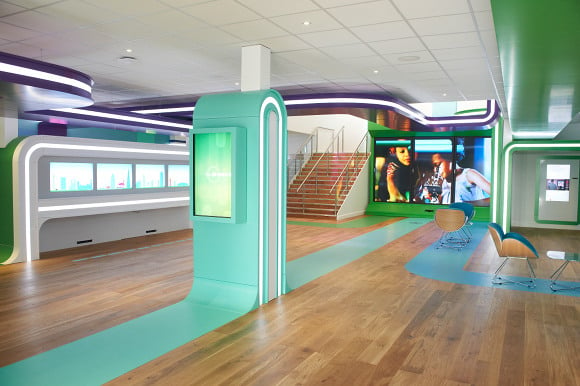This article is more than 1 year old
Behind every great athlete is a nervous network engineer
A short history of Olympics communications
Mixed signals
One problem is that you simply can’t keep stuffing more capacity into a small space. Wireless operators at the Olympics will populate the site with femtocells, which can backhaul through a broadband gateway to the operator’s network.
Terrific! But interference from other femtocells and macrocells limits capacity.
“It is relatively easy to deploy small cells and reuse the kit but 3G cells all use the same frequency. At least when the system degrades, it degrades gracefully,” says Webb.
4G LTE technology could have doubled or tripled capacity around the park, but that was never an option: it is not the network that counts, it is the devices using it. Give it another couple of years, and 50 per cent device penetration might make 4G a practical proposition. That will be for Brazil’s telecoms engineers to deal with.
So for the mobile operators in London, there will be some known knowns, some unknown known unknowns, a few known known unknown knowns… well, you get the picture.
The “mostly known knowns” category includes the smartphone, which uses 35 times as much data as a standard phone. O2 published research in June to show that smartphone users spend an average of 25 minutes a day on the internet, 17 minutes social networking, 13 minutes playing games – and 12 minutes making calls.
The load placed on the network by smartphone signalling has been the cause of worldwide angst. A single instant message can generate 30 signalling messages, about the same number as a voice call; a smartphone sitting in someone’s pocket, but updating itself regularly with Facebook messages about Olympic events which are then retweeted by all the owner's mates, will generate the same traffic as 1,000 voice calls a day.
It is unlikely that many smartphones will be kept in visitors' pockets. The BBC, having taken the decision to supply live feeds from all events, expects to be supplying 1Tbps of data at peak times – much of it through iPlayer apps installed on the little beasts.
The problem is not limited to the Olympic Park: all over the UK, bus passengers will experience the Olympics via the phone of the guy sitting next to them.
Neil McKinlay, director of product management at Empirix, a testing and monitoring specialist, explains that operators have not only had to spot bottlenecks and add temporary overlay networks, but also put a stop on any network changes until after the games.
Guessing games
But as Webb says, it is no more possible to forecast peak demand than to predict who will win each event.
“I don’t think the networks can cope seamlessly. No one is completely sure that we will all be able to get the replay of the 100 metres final as soon as it is finished,” he says.
“There will undoubtedly be a headline at some point saying that someone couldn’t download a video clip.“
Still, if 3G is overloaded, there’s always the Wi-Fi, delivered by a partnership between BT, Cisco (official network infrastructure provider) and Atos (official gluer-together of different bits of kit).

The suite life: Inside Cisco House, the official Olympics' voice and data provider's Olympics hospitality suite.
Cisco is responsible for making sure that all voice and video data from the games is transmitted safely, and it has had engineers seconded at Locog HQ for two years.
Its core network transmits data from 36 competition venues, 20 further venues such as the Olympic Village and operations centre, and approximately 50 other spectator and athlete sites. Cisco is capable of transmitting more than 60Gbps in the core network.
Bet they used all the secret flashy stuff from Cisco’s secret lab. Er, no, says Ian Foddering, CTO of Cisco UK and Ireland.
“Most people expect that. But Locog wanted tried-and-tested technology that has been deployed for at least two years elsewhere,” he says.
Never fear, we can still make this the Buzzword Olympics. This will be the first Cloud Games, with Cisco acquisition WebEx using cloud deployment for videoconferencing among staff. Cisco is also making it the IP Telephony Games, with 16,500 IP handsets.
So whether you are visiting the Olympic Park so you can send film of yourself pointing at the wonky sculpture or just enjoying the beach volleyball on your smartphone at work, remember: behind every great athlete there’s a very tired network engineer. ®
